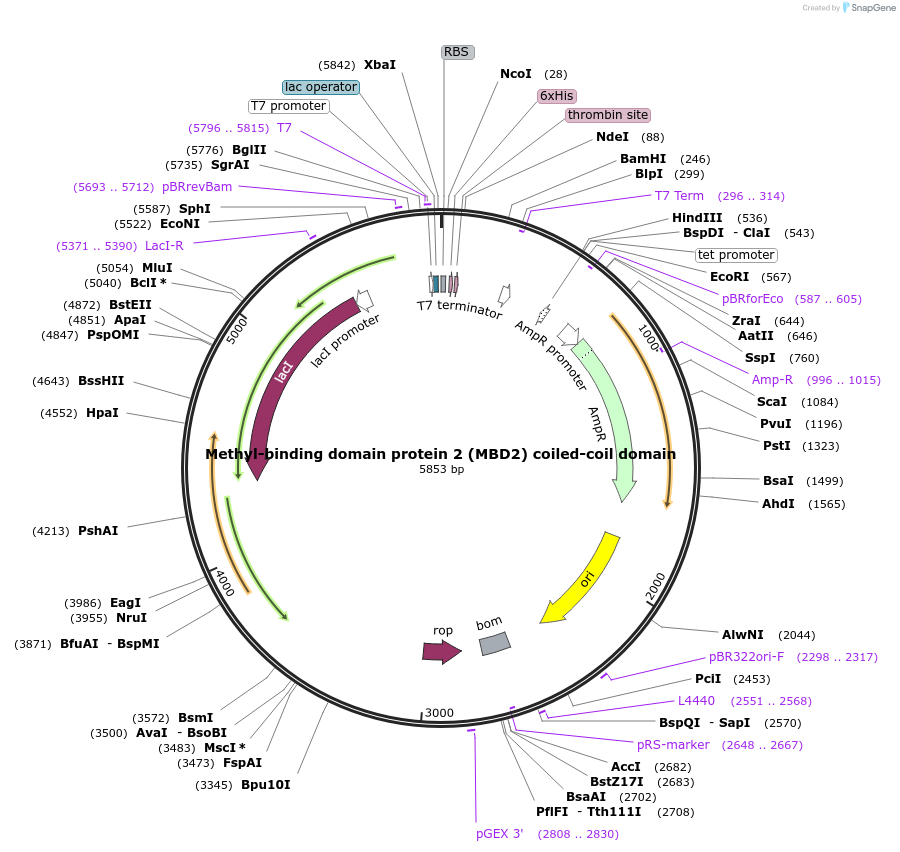Methyl-binding domain protein 2 (MBD2) coiled-coil domain
(Plasmid
#132721)
-
PurposeBacterial expression vector for methyl-binding domain protein 2 (MBD2) coiled-coil domain for use as competitor peptide in measurements of effective concentrations
-
Depositing Lab
-
Sequence Information
Ordering
| Item | Catalog # | Description | Quantity | Price (USD) | |
|---|---|---|---|---|---|
| Plasmid | 132721 | Standard format: Plasmid sent in bacteria as agar stab | 1 | $89 | |
Backbone
-
Vector backbonepET15b
- Backbone size w/o insert (bp) 5708
- Total vector size (bp) 5900
-
Vector typeBacterial Expression
Growth in Bacteria
-
Bacterial Resistance(s)Ampicillin, 100 μg/mL
-
Growth Temperature37°C
-
Growth Strain(s)DH5alpha
-
Copy numberHigh Copy
Gene/Insert
-
Gene/Insert nameMethyl-binding protein domain 2 coiled-coil domain
-
Alt nameMBD2
-
SpeciesSynthetic
-
Insert Size (bp)204
- Promoter T/
-
Tag
/ Fusion Protein
- N-terminal His-tag. Flanking linkers to match accompanying biosensor (N terminal on backbone)
Cloning Information
- Cloning method Restriction Enzyme
- 5′ cloning site NheI (not destroyed)
- 3′ cloning site BamHI (not destroyed)
- 5′ sequencing primer T7 Fwd
- (Common Sequencing Primers)
Resource Information
-
A portion of this plasmid was derived from a plasmid made byPurchased as synthetic gene from Genscript
Terms and Licenses
-
Academic/Nonprofit Terms
-
Industry Terms
- Not Available to Industry
Trademarks:
- Zeocin® is an InvivoGen trademark.
These plasmids were created by your colleagues. Please acknowledge the Principal Investigator, cite the article in which the plasmids were described, and include Addgene in the Materials and Methods of your future publications.
-
For your Materials & Methods section:
Methyl-binding domain protein 2 (MBD2) coiled-coil domain was a gift from Magnus Kjaergaard (Addgene plasmid # 132721 ; http://n2t.net/addgene:132721 ; RRID:Addgene_132721) -
For your References section:
Measuring Effective Concentrations Enforced by Intrinsically Disordered Linkers. Sorensen CS, Kjaergaard M. Methods Mol Biol. 2020;2141:505-518. doi: 10.1007/978-1-0716-0524-0_25. 10.1007/978-1-0716-0524-0_25 PubMed 32696374



